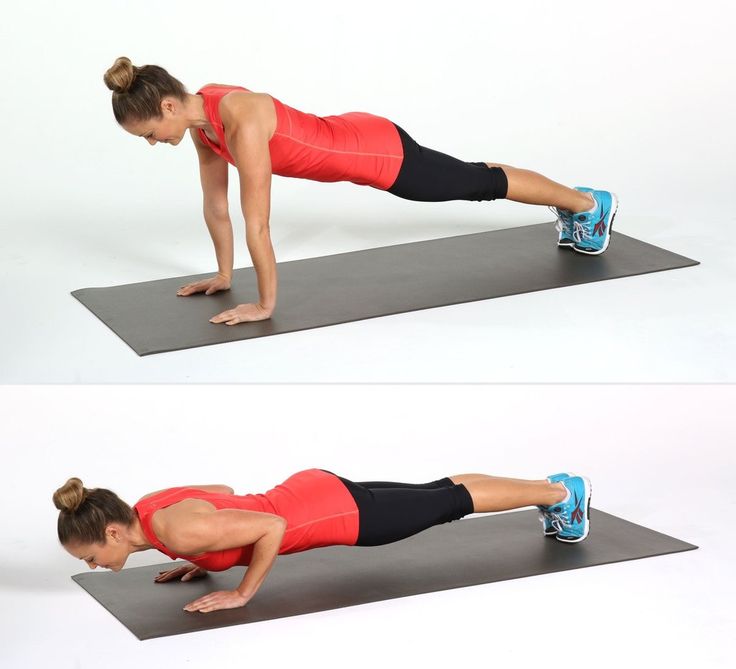Push-Ups Tips for Max Strength Gains
Video by TJ O’Brien
Push-ups anyone? Seemingly simple and too easy, it can be one of the most fundamental movements you do. Whether you have a diverse fitness background, a love-hate relationship with fitness, are limited to a certain community in fitness, or have no fitness background at all, the push-up can be a very effective tool for your tool box when done correctly.
Benefits of Doing Push-UpsThe push-up is an incredibly simple movement, yet provides a very effective tool for your fitness, especially overall strength. The benefits of doing push-ups include increased chest and shoulder strength, core stability and strength, increased upper back strength, and improved muscle size and definition.
All of these benefits directly translate to other areas of strength and fitness. Want to be able to squat more? Increase your core and upper body strength? Want to be able to do more pull-ups? Increase your upper back and shoulder strength? Want to be able to press more weight either overhead or on the bench? Do more push-ups.
How to Get the Most Out of Your Push-UpsNever neglect the fundamentals and stick to things that are simple and effective like push-ups. Here’s how to get the most out of your reps as far as strength gains and hypertrophy.
Full Range of Motion (ROM)
Hypertrophy is the increase and growth in muscle cells and to accomplish this, you must break down the muscle fibers so that they rebuild and get stronger.
Strength is gained in the range it is trained. If you want hypertrophy, it is important you maintain the same range of motion (ROM) throughout your reps. Using push-ups as the example, when you change your ROM or lose tension in your midline, you are no longer stressing out the muscle(s) you are trying to target, as others jump in to help compensate.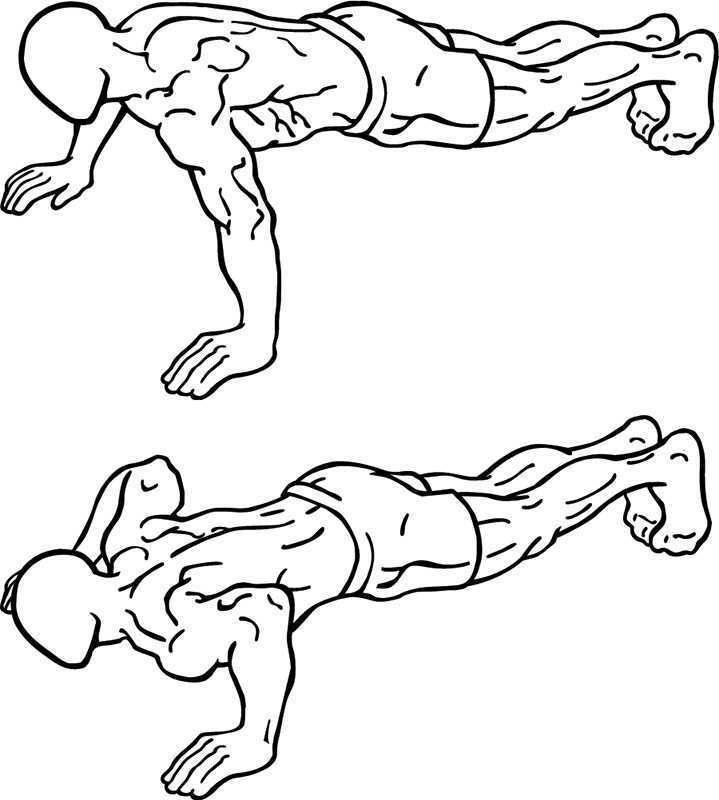
Hypertrophy only happens when those fibers get tired and you are forced to recruit into action other fibers that you normally wouldn’t recruit under other circumstances. So if you want to get stronger, you have to strain those ranges.
More Mechanical Tension = More Hypertrophy
Mechanical tension is the force you place on your muscles when you contract them against resistance. Muscles have receptors called mechanosensors that sense how much force the muscle is under and the length of time it sustains that tension i.e. time under tension (TUT). Once these sensors detect tension, a series of chemical reactions are set into motion that ultimately cause the muscle to grow.
Eccentric contractions stimulate mechanosensors more than concentric or isometric contractions. This is one of the main reasons you’ll see us prescribe a training tempo to push-ups – and other movements – in your strength work. The other two are improved quality of movement and injury prevention.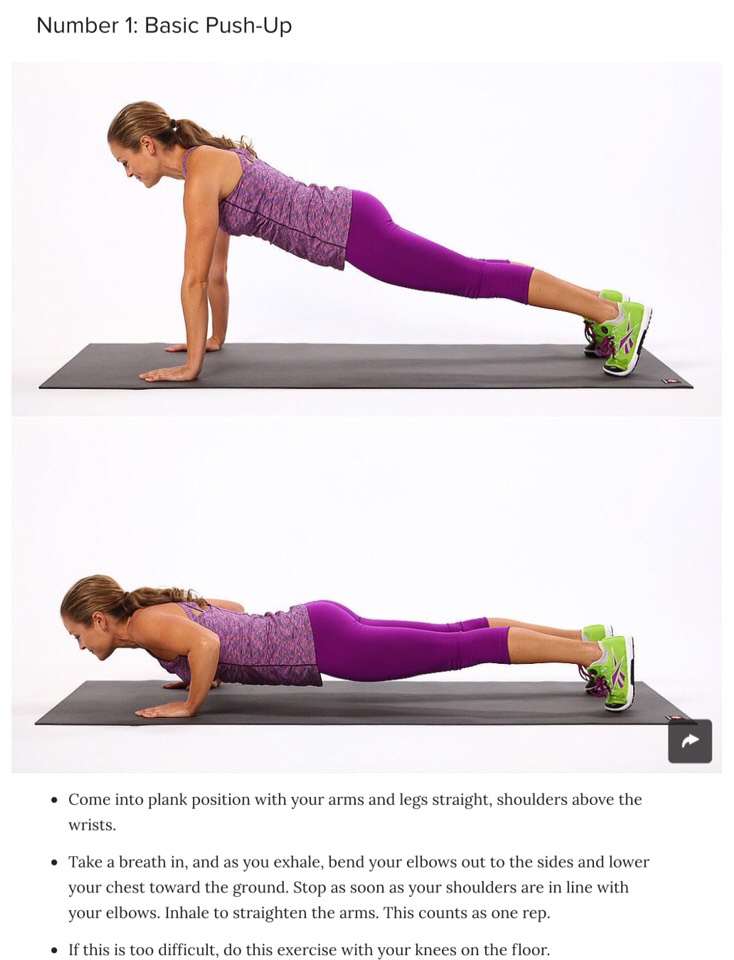 Read more about why we love tempo training and how to decipher those tempo prescriptions here.
Read more about why we love tempo training and how to decipher those tempo prescriptions here.
Mechanical tension is inverse to the speed of your movement. For example, when you are grinding out your reps of push-ups with your full ROM but you are forced by fatigue to go slowly to hold this form, that’s actually beneficial to gaining hypertrophy because you are spending a greater amount of TUT.
Practice for Purpose
Practicing perfect form and complete ROM provides better transference to competition or real world use. If you are not practicing push-ups with “honor” then you can’t expect to do them to that highest standard on the competition floor, leading to no-reps and quicker fatigue for having to repeat those reps.
How to Adjust When Your Push-Ups Break DownMost of us can tell where our form tends to break down during our high-rep push-ups. Once you identify your problem area, you’ll know where to turn when your reps start getting sloppy or less than ideal in form so you can make adjustments (modifications).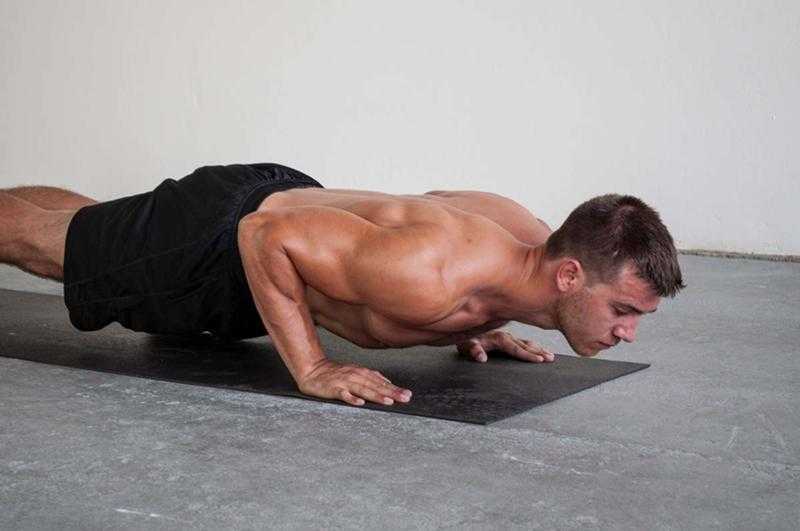 Remember that modifications are NOT a sign of weakness! They will – in the long run – make you stronger because they will allow you to maintain TUT and full ROM, both of which are necessary for increased strength and muscle growth.
Remember that modifications are NOT a sign of weakness! They will – in the long run – make you stronger because they will allow you to maintain TUT and full ROM, both of which are necessary for increased strength and muscle growth.
Frequently it’s in the midline for most people and they tend to “snake” up their reps – meaning they push their chest off the floor before their hips – once they get tired. If this happens to you at any point during your set, you have a couple of options to help you maintain midline integrity.
Midline Cue #1: Slow Down!
If you find your midline failing you during your push-ups, first try slowing down your speed to see if you can maintain your form and your ROM. Remember that going slower will provide you with longer TUT and therefore more strength gains. So let go of the ego! You might not finish first today but going slower will give you greater payoffs in the long run.
Midline Cue #2: Squeeze Your Legs Together
Make sure your feet and inner thighs are touching each other and SQUEEZE them together while driving your heels away from your body. Doing this creates tension from shoulder to heel, helping you keep your midline tight and aligned.
Modification #1: Raise the Bar
If you are doing your push-ups on the floor and lose midline integrity, move your hands to a higher position than your feet. This can be done by elevating them on a box or on a barbell that is placed on a rack.
Modification #2: Band Assisted
The banded push-up helps support the hips and belly where most of us tend to break into a jeopardizing swayed (hyperextended) back position. You still have to do the work, but the band gives you feedback and a little assistance to achieve your goal. You’re also less likely to put your shoulders into an incorrect position because form won’t deteriorate so quickly.
Modification #3: Knees to the Floor
This modification allows you to take some of the weight of your legs out of the equation and is great for when you are doing sets with larger rep ranges for time because you don’t have to stop and move to a bar like in the modification above. You can simply put your knees to the floor and continue your set.
Shoulder Breakdown in Push-UpsOthers try recruiting their traps and rhomboids by rounding their shoulders and shrugging them toward their ears.
Shoulder Cue #1: Slow Down!
Same cue as above. Forgo the sloppy speed for slow gainz! See if you can own the bottom position for one second before driving back up the top. If this causes you to compensate, consider adding tempo push-ups into your strength routine, perhaps with a raised bar or box so that you can feel the right bottom position before driving out of it.
Shoulder Cue #2: Unscrew the Floor
This cue is a reminder to yourself that your shoulders should be as externally rotated as possible. Pretend you are trying to loosen the lid of a jar with your hands on the floor. Create tension in your hands, through your fingers, by squeezing them into the floor and rotating out toward your sides (without ACTUALLY moving them).
Pretend you are trying to loosen the lid of a jar with your hands on the floor. Create tension in your hands, through your fingers, by squeezing them into the floor and rotating out toward your sides (without ACTUALLY moving them).
Shoulder Cue #3: Flex Your Lats
Check yourself to make sure your shoulders are set and not shrugging by squeezing/rotating your elbows toward your lats. You should feel those muscles along your shoulder blades fire and help hold your shoulders into a set and non-shrugging position.
If you are still struggling to maintain a strong shoulder position then use one of the three modifications listed above:
Modification #1: Raise the Bar
Modification #2: Band Assisted
Modification #3: Knees to the Floor
It is way too easy to overlook the basics and get wrapped up in the complexity of movements and program. Never neglect the fundamentals and stick to things that are simple and effective like push-ups. If you have trouble figuring out where your reps break down, ask your coach to help you identify where your area of focus should be.
If you have trouble figuring out where your reps break down, ask your coach to help you identify where your area of focus should be.
Pushups are an integral part of military and law enforcement physical fitness. This exercise is a part of military service’s physical fitness test including the US Army, Air Force, and Navy. It is universally seen as a test of your upper body strength and is a mainstay in most physical fitness programs. Additionally, Special Operations Forces (SOF) take pride in performing challenging versions of the push up to put their bodies to the test, such as core training with push ups. Training to increase your push up performance is important – whether you are a US Army soldier preparing for your Physical Fitness Test, or a trainee conditioning before Basic Training, or someone preparing for the FBI Academy. If you expect to succeed in advanced elite training such as Army Ranger School or Airborne School , make sure you are able to accomplish a lot of push ups – because you will be tested!
To increase your ability to do push ups and to increase your strength, you will need to vary your workouts. With any exercise, whether you’re using your own body weight, free weights or machines, if the resistance doesn’t increase, your muscles won’t be overloaded and the stimulus these fibers need to grow in size will be missing. Think about it: if you work up to three or four sets of 25 push-ups, how hard can each repetition be? You’d build local muscular endurance, but you wouldn’t be any stronger. Say a person doing bicep curls can do three sets of 20 reps with 15 pounds: wouldn’t you think they could probably do one set of 10 reps with 20 pounds? That’s what they would need to do to make their biceps grow stronger and bigger. However, there are a few ways you can increase the resistance of your push-ups.
With any exercise, whether you’re using your own body weight, free weights or machines, if the resistance doesn’t increase, your muscles won’t be overloaded and the stimulus these fibers need to grow in size will be missing. Think about it: if you work up to three or four sets of 25 push-ups, how hard can each repetition be? You’d build local muscular endurance, but you wouldn’t be any stronger. Say a person doing bicep curls can do three sets of 20 reps with 15 pounds: wouldn’t you think they could probably do one set of 10 reps with 20 pounds? That’s what they would need to do to make their biceps grow stronger and bigger. However, there are a few ways you can increase the resistance of your push-ups.
Are you motivated? Learn about Army Special Forces.
Got What it takes? Check out the Special Forces Qualification Course
Deploying soon? Check out our Afghanistan Gear List and prepare for your deployment in support of Operation ENDURING FREEDOM.
Looking for historical information such as old class photos or rosters of your Basic Training class? Have questions about your previous Army units or want access to past records? Try our comprehensive military records search resource
The Ultimate ASVAB Practice Pack provides you three full-length ASVAB practice tests with answer key and unlimited access to the ASVAB Online Practice Center. Modeled After the CAT-ASVAB with over 2000 questions in the question pool – each practice test is different every time you take it. See your AFQT score and Subtest scores at the end of the practice test. Track your scores and history to see how you are improving. 100% Satisfaction Guaranteed. Start practicing now.
Modeled After the CAT-ASVAB with over 2000 questions in the question pool – each practice test is different every time you take it. See your AFQT score and Subtest scores at the end of the practice test. Track your scores and history to see how you are improving. 100% Satisfaction Guaranteed. Start practicing now.
One way to increase the resistance is to elevate your feet while doing push-ups. Start with your feet on a step at the bottom of a stair or a low step stool. Raising your feet higher will make you work against gravity, thereby increasing the resistance. Work up to the point where you can do your push-ups with your feet on a chair. Note: The higher your feet, the more you’ll work your shoulders, so mix in some flat push-ups to make sure your chest gets a workout, too.
Push-ups must be practiced at least three to five times per week to ensure progress. If they are practiced too often, the muscles may not have enough time to recuperate and become stronger.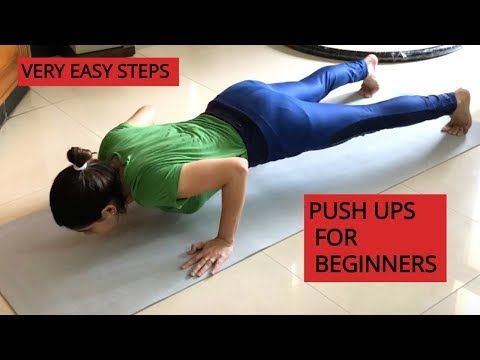 Below are some variations that will help you improve your strength and muscular endurance. When practicing push ups, perform your exercises just as if you were working out with free weights – perform your pushups in sets and remember that repetition and increase in resistance and/or frequency are the best ways to challenge yourself. Doing one big set of 80 push ups is not as effective as 4x sets of twenty pushups with 30 seconds rest between each set… then increase to 4x sets of twenty five… then decrease the rest period.
Below are some variations that will help you improve your strength and muscular endurance. When practicing push ups, perform your exercises just as if you were working out with free weights – perform your pushups in sets and remember that repetition and increase in resistance and/or frequency are the best ways to challenge yourself. Doing one big set of 80 push ups is not as effective as 4x sets of twenty pushups with 30 seconds rest between each set… then increase to 4x sets of twenty five… then decrease the rest period.
Push Up Improvement Video
Tips: Kneel down on the floor and place your hands flat on the floor and slightly wider than shoulder width apart. With your shoulders directly over your hands, straighten your arms. Move your feet back, placing your toes on the floor, so that your knees are off the floor and your legs are straight. At this point, your body should form a straight line from your shoulders to your ankles. Your body should remain straight throughout this exercise. Keep your head and neck in line with your body so that your are looking down toward the floor. This is the starting position. In a controlled fashion, lower your body down toward the floor, bending your elbows, until your body is nearly touching the floor. Now, push your body up away from the floor, straightening your arms, until you have returned to the starting position. If you need to reduce the intensity of this exercise you can perform the pushup from your knees.
At this point, your body should form a straight line from your shoulders to your ankles. Your body should remain straight throughout this exercise. Keep your head and neck in line with your body so that your are looking down toward the floor. This is the starting position. In a controlled fashion, lower your body down toward the floor, bending your elbows, until your body is nearly touching the floor. Now, push your body up away from the floor, straightening your arms, until you have returned to the starting position. If you need to reduce the intensity of this exercise you can perform the pushup from your knees.
Not everyone can do push ups. Believe it or not, even some large-framed individuals that seem like the body-builder types have trouble doing push ups. Don’t fret if this is you – you can train your body to increase the number of push ups you can do. However, some people have problems doing push ups because of an injury such as a shoulder or arm injury. If you are experiencing pain or restriction in your freedom of joint movemement, please consult with your physician before you engage in a rigorous push up improvement workout. With a little bit of hard work, determination, and targeted workout (blasting your chest and triceps), you should be able to increase your push ups. For service members in the military, this could mean eventually maxing the PFT at last!
If you are experiencing pain or restriction in your freedom of joint movemement, please consult with your physician before you engage in a rigorous push up improvement workout. With a little bit of hard work, determination, and targeted workout (blasting your chest and triceps), you should be able to increase your push ups. For service members in the military, this could mean eventually maxing the PFT at last!
Check out these great resources for help with push ups!
To increase your push ups, you should incorporate some sort of weight lifting workout. Increase the strength of your chest (pectoral) and triceps muscles will allow you to do more push ups. It is a myth that you can only train for push ups by doing push ups. You should supplement your push up variations workout by doing bench press (with a barbell or dumbbells) and triceps exercises such as pull downs or kick backs. Remember, a strong chest and strong triceps will give you strength in push ups.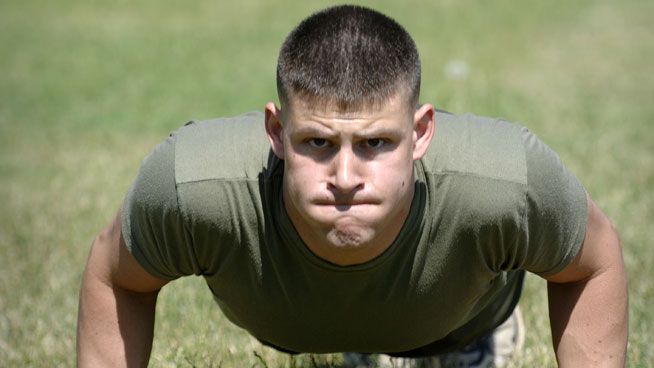
Training only on push-ups and/or bench presses can lead to a strength imbalance. Pull-ups or some type of rowing work should be done with resistance or training partner.
When training, pay attention to proper form. Keep your body straight and rigid. Lower yourself or the weight in a controlled manner so that you can gain a training effect. During the test itself, however, to conserve energy and improve your performance, you should work at a much more rapid pace. When being tested, try to do as many repetitions as possible during the first 45 to 60 seconds.
Place your hands at shoulder width with your fingers pointing forward and slightly outward. Keep your heels and toes together. Do not forget to breathe during both training and testing. Change position of hands to a narrower or wider position after you are tired, then try to do some more push-ups.
Our push up improvement program is aimed at increasing your endurance and your strength at the same time. You are probably leading a pretty hectic life while also trying to improve your physical fitness. Now is when it is most important to consume an adequate supply of the necessary nutrients and stay hydrated. Help build solid muscle mass, supplement your diet with Whey Protein. Check out the latest offer: HUGE 25% OFF SALE at Bodybuilding.com – Act Fast! Save on a gazillion products!
Now is when it is most important to consume an adequate supply of the necessary nutrients and stay hydrated. Help build solid muscle mass, supplement your diet with Whey Protein. Check out the latest offer: HUGE 25% OFF SALE at Bodybuilding.com – Act Fast! Save on a gazillion products!
There is no doubt that determination and the exercises listed on this page will help you increase your physical fitness test scores, however, doing this rigorous program requires commitment and discipline. The exercises are simple – they involve no sophisticated movements or machines. For maximum performance, check out Bodybuilding.com’s TOP 50 selling products. You can’t always control what you eat – especially if you are deployed to Iraq or Afghanistan – but, you can stack the odds in your favor by supplementing your diet with the right nutritional supplements.
For normal push-ups, the start position begins with the hands shoulder width apart, elbows fully extended, BODY straight and the feet together or up to 12 inches apart.
To complete a repetition, the trainee lowers his/her BODY , maintaining a straight back, until the upper arm is parallel with the ground, then returns to the start position. Once the two-minute push-up period has started, trainees may not lift their arms or legs off the ground. They may rest in the “start” position. They may also bend at the waist and the knees to relax the back, always maintaining 4-point contact with the ground. Before resuming push-ups, they must return to the start position.
POSITION. Keep your body straight. The balls of your feet should be on the ground, and your hands should be on a wall, a desk, or steps of a staircase. You can gradually increase the difficulty of the exercise by first placing your hands on the wall, later on a desk, then on a chair (or by progressing to lower stairs on a staircase). By progressing to lower levels of hand placement, you increase the intensity of the exercise and your muscle strength.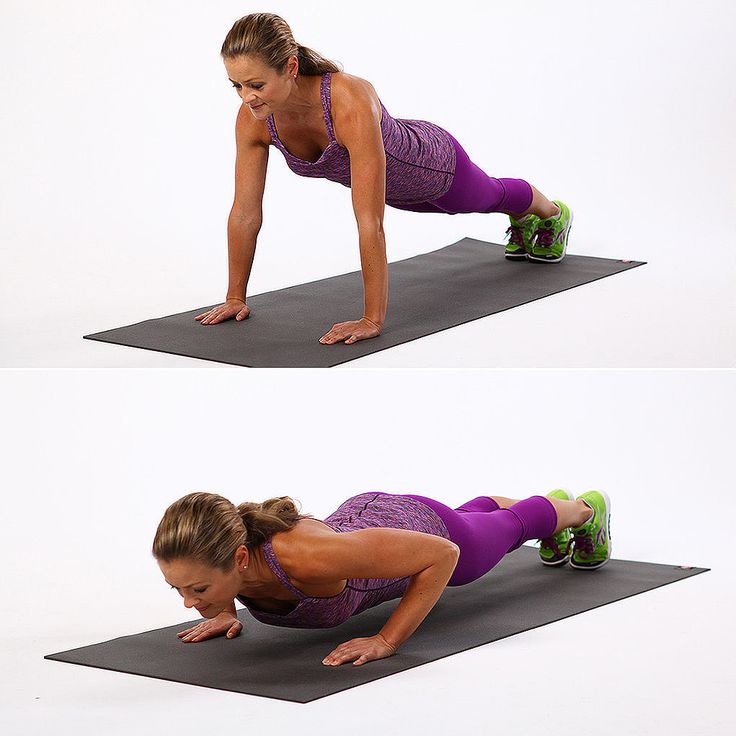 By performing non-traditional push-ups such as these two modified push ups exercises, you are challenging your stabilizer muscles and training to a higher standard.
By performing non-traditional push-ups such as these two modified push ups exercises, you are challenging your stabilizer muscles and training to a higher standard.
ACTION. This exercise involves the same action as the regular push-up. For instance, if your goal is 50 push-ups, do 40 modified push-ups; wait, do another 40; wait and do another 40. When this becomes easy, raise your sights and score.
POSITION. Keep your body straight with your hands on the ground and your feet on the chair, steps, or some object. Progressively elevate your feet to higher levels to increase the intensity. You may also increase the difficulty, hence your strength, by doing push-ups between chairs with your feet elevated and lowering yourself as far as your can between them. Do sets and repetitions as above. A lot of people will plant their feet on a flat bench in the gym – to increase the difficulty of this exercise and really work out your stabilizer muscles, try laying your feet on top of a Swiss Ball (inflatable exercise ball) in the gym.
ACTION. This exercise involves the same action as the regular push-up. Strive for three sets of 80% of your goal.
Muscle Milk Protein Supplement
Muscle Milk is an “evolutionary” muscle formula promoting efficient fat burning, lean muscle growth and fast recovery from exercise. Metabolically favorable ingredients stimulate growth and recovery in a similar manner to mother’s milk nourishing a baby. Muscle Growth and Repair: EvoProTM is a complex ratio of proteins, peptides and amino acids designed to replicate the amazing benefits of mother’s milk for rapid tissue growth and repair.
The Perfect Push Up puts a new spin on one of the oldest exercises, the pushup. Invented by someone who knows a lot about pushups, former U.S. Navy SEAL, Alden Mills, the Perfect Pushup’s rotating handles allow your arms to rotate naturally when you do pushups the same way they do when you throw a punch or press up a dumb bell. This unique feature accelerates results by engaging more muscles in the arms, chest, shoulders, and back. It also helps reduce strain on wrists and elbows, and helps to stabilize and strengthen the shoulder joint by engaging the scapular and rotator cuff muscles. You will notice the comfort and effectiveness of the Perfect Pushup on the very first try! Includes free instructional DVD and full color poster that show perfect form along with a customizable 21 day workout planner based in SEAL 2 minute drills that works for any fitness level – from beginner through Olympic athlete.
It also helps reduce strain on wrists and elbows, and helps to stabilize and strengthen the shoulder joint by engaging the scapular and rotator cuff muscles. You will notice the comfort and effectiveness of the Perfect Pushup on the very first try! Includes free instructional DVD and full color poster that show perfect form along with a customizable 21 day workout planner based in SEAL 2 minute drills that works for any fitness level – from beginner through Olympic athlete.
Just as you will find that you won’t be able to use quite as much poundage doing a twisting DB bench press rather than a non-twisting linear DB press, so with these twisting pushup bars you will find yourself being able to do fewer repetitions than with normal fixed push-up bars. That is really the main advantage of these “Perfect Pushup” devices: you don’t need to crank out as many reps to get to the same level of exhaustion. I normally can do around 30-40 reps per set with normal pushup bars, 50 reps per set with no bars just the ground, and only about 20-25 reps per set with these “perfect pushup” bars.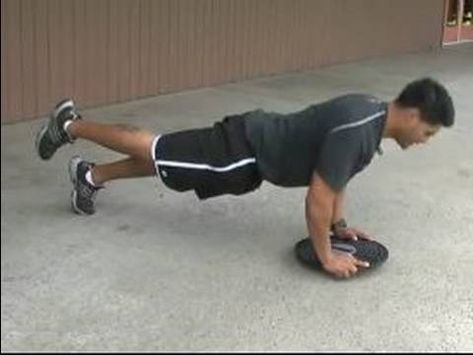 This means you get a faster, more efficient workout. And if you are prone to rotator cuff issues, also a safer workout as long as you don’t space these bars too far apart. They work best at shoulder width and especially, closer in—which makes perfect sense, since if you were doing a twisting DB bench press you would hold the DBs much closer together than if you were doing a barbell bench press.
This means you get a faster, more efficient workout. And if you are prone to rotator cuff issues, also a safer workout as long as you don’t space these bars too far apart. They work best at shoulder width and especially, closer in—which makes perfect sense, since if you were doing a twisting DB bench press you would hold the DBs much closer together than if you were doing a barbell bench press.
Find out more about the Perfect Push Up.
Standard
Lie facedown on the ground. Put your legs together. Place your hands on the ground, palms down, fingers pointed forward. Balance your weight on your palms and your toes. Your hands should be shoulder width apart. Keeping your body straight, lower your body by bending your elbows. Go down until your chest almost touches the ground. Return to starting position.
Elevated Push Ups
Same as the standard push-up, except you place your feet on a chair or Swiss ball or elevated surface. This allows you to hit your upper pecs more. Lower yourself until your chest almost touches the floor as you inhale. Using your pectoral muscles, press your upper body back up to the starting position and squeeze your chest. Breathe out as you perform this step. After a second pause at the contracted position, repeat the movement for the prescribed amount of repetitions.
This allows you to hit your upper pecs more. Lower yourself until your chest almost touches the floor as you inhale. Using your pectoral muscles, press your upper body back up to the starting position and squeeze your chest. Breathe out as you perform this step. After a second pause at the contracted position, repeat the movement for the prescribed amount of repetitions.
Wide Push Ups
Same as the standard push-up, except hands are placed wider than shoulder width. This helps bring out your outer pectorals. Augment this chest-blasting exercise by adding barbell or dumb bell bench press or chest flyes. A lot of people neglect their chest workout when trying to increase their push ups.
Diamond Push Ups
Same as the standard push-up, except hands are positioned under the middle of your chest. Put your hands together so there looks like there is a diamond in between them (Index fingers touch each other and thumbs touch each other). This helps develop your inner pecs and your triceps.
Basketball Push Ups
Same as the standard push-up, except you balance one hand on a basketball, medicine ball, or Swiss ball. This works stabilizer muscles.
Three-Point Push Up
Same as the standard push-up, except you put one foot on top of the other. So your points of contact are: 1.) left hand, 2.) right hand, and 3.) one foot while the other foot rests on its heel.
Deep Push Ups
Same as the standard push-up, except you need three chairs. Place the chairs so your feet are resting on one and your hands are on the others. Now you can go down farther than you could when doing push ups on the floor.
Plyometric Push Ups
Stretch-Shortening Push-Ups – Drop yourself off a raised platform in a push-up position … to a pushup with a narrow hand position. You can also do explosive pushups by pushing yourself off the ground, landing, then repeating — or you can push up then clap your hands together as your body reaches its peak. Or have your partner push down on your back to increase resistance as you do your push up.
Or have your partner push down on your back to increase resistance as you do your push up.
Special Ops Workout
Mike Mejia and Stew Smith put together a comprehensive book detailing what it takes to be apart of the Special Forces community. Together, their knowledge, know-how, and grit lay the foundation for what it takes, physically and mentally, to screen for the Navy Seals, Army Special Forces and Air Force Special Forces. The exercises and workouts contained within give the reader a glimpse of what tools and abilities are needed to succeed and become a part of our Special Forces. I for one have used this book and another of Stew Smiths book while serving in Operation IRAQI FREEDOM. All the workouts allow me to stay in shape, keep the edge and ward off any boredom that creeps up in between missions and operations. This book is a must have, read, and heed for any individual wishing to become a part of America’s Special Forces.
Body for Life
“Body For Life” is the most approachable, motivational, and effective fitness program I have encountered.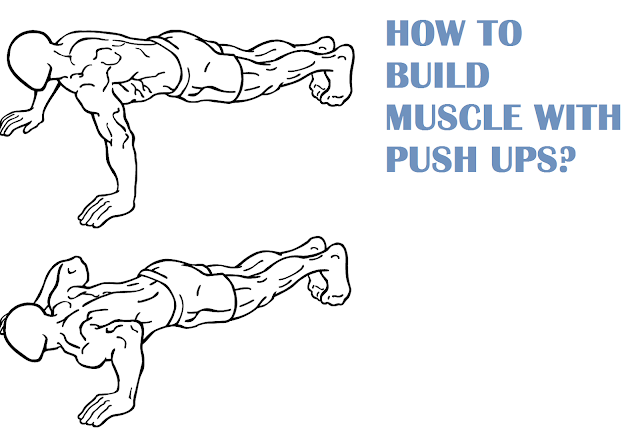 Several of my male friends were getting in extremely buff while following this program, and their wives were getting into great shape, so I had to toss my skepticism aside and give it a try. Sure enough, even after 6 weeks, people were noticing that I looked “physically fit.” The book explains the workout process and the eating process in a clear, informative, and motivating manner, not only explaining how to work out and eat correctly, but WHY it must be done correctly. The book also contains many photographs demonstrating proper workout techniques, as well as lists of “proper” foods, and even some recipes!
Several of my male friends were getting in extremely buff while following this program, and their wives were getting into great shape, so I had to toss my skepticism aside and give it a try. Sure enough, even after 6 weeks, people were noticing that I looked “physically fit.” The book explains the workout process and the eating process in a clear, informative, and motivating manner, not only explaining how to work out and eat correctly, but WHY it must be done correctly. The book also contains many photographs demonstrating proper workout techniques, as well as lists of “proper” foods, and even some recipes!
The Ultimate Basic Training Guidebook
This book will prepare a recruit, mentally and physically, for basic training in the U.S. Army. It offers practical and unique solutions to challenges encountered by new recruits. Inside you’ll find an 8-week fitness program specifically designed to improve your fitness test scores, study guides, an instructional “How to…” chapter, a list of what to bring (and not to bring) to basic training, tips for success, and much more.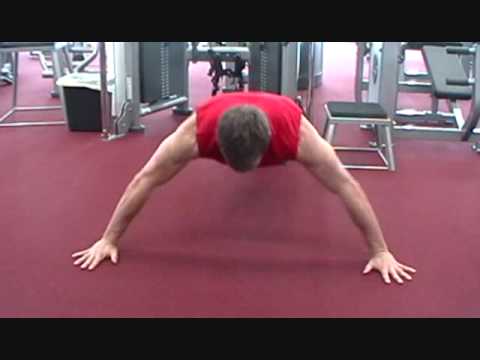
Air Force | Army Rangers | Navy SEALs | Special Forces
Photo: AP Archive
Svetlana Stepanova, senior coach of the Platinum Fitness club, spoke about the intricacies of mastering this physical exercise. “Push-ups are a basic exercise that engages a large number of muscle groups. Therefore, if you learn how to do push-ups well, then, in principle, you will not particularly need dumbbells and simulators, ”notes Svetlana.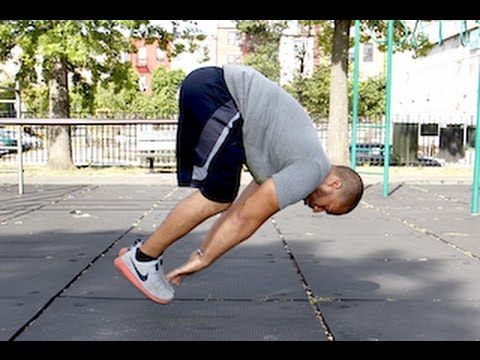 First of all, you need to strengthen the weak muscular corset of the shoulder girdle. Although the trainer advises to load all muscle groups, including the abdomen, back and legs.
First of all, you need to strengthen the weak muscular corset of the shoulder girdle. Although the trainer advises to load all muscle groups, including the abdomen, back and legs.
Tip 1: Get weak against the wall
- If there is very little strength, you can start by doing push-ups from the wall, - advises Svetlana Stepanova. - Place your hands shoulder-width apart, at the level of the pectoral muscles, and push up like this. But this option is very easy, for example, for weak girls.
The number of repetitions with such simple push-ups should be more. And after 2-3 days of classes, you can try to do push-ups from the floor with bent knees. It is not worth delaying the transition from exercises with a wall to exercises on the floor, because otherwise the nervous system will remember easy movements and then refuse to work in more difficult conditions, the trainer explains.
Tip 2: Get on your knees and hold your back
The next stage - push-ups from the floor with bent knees - is more difficult. Place a soft mat under your knees and get started. “Be in a position face down, rest your arms straight on the floor, bend your knees, your shins can be raised up, put your palms shoulder-width apart or a little wider,” Svetlana teaches. Putting your hands a short distance, making the so-called "narrow grip", is not worth it for beginners - it's harder.
Place a soft mat under your knees and get started. “Be in a position face down, rest your arms straight on the floor, bend your knees, your shins can be raised up, put your palms shoulder-width apart or a little wider,” Svetlana teaches. Putting your hands a short distance, making the so-called "narrow grip", is not worth it for beginners - it's harder.
The main task is to keep the back straight without bending in the body. “Be sure to take a breath, bend your elbows and bring your chest as close to the floor as possible,” the specialist describes the correct execution of the exercise. - The most important thing is that the lumbar spine does not strongly arch, does not sag. To avoid this, tighten your abdominal muscles.
Tip 3: Breathe Properly
You need to breathe correctly during push-ups: while inhaling, bend your arms at the elbow joint and lower yourself to the floor, and while exhaling, when a powerful effort occurs, lift the body up. “In no case do not forget to breathe, we must not create intra-abdominal pressure,” the coach warns.
“In no case do not forget to breathe, we must not create intra-abdominal pressure,” the coach warns.
Tip 4: Increase the number of repetitions
At the very first stage, pushing up from the floor with bent knees, you need to repeat the exercise at least 3-5 times, performing 3-4 sets. This will help to gradually strengthen the muscles. For weak women, the exercise can be done 1-2 times to start. For men it is better to start with five times. The number of repetitions and approaches should be gradually increased. “For example, in the first week, you can do three sets of five push-ups. Next week - add either the number of push-ups or the number of approaches, I advise both. Let's say you already do 4 sets, pushing up 7 times, ”explains Svetlana Stepanova.
This option is more suitable for women. Men, even very weak ones, should load themselves more intensively, since their shoulder girdle is stronger in any case, and increase the number of repetitions in the second week, for example, up to 10 times, and in the third - up to 15.
Tip 4: Warm up is a must
Before starting push-ups and between sets, be sure to do a good warm-up, otherwise you can get injured by damaging the ligaments and tendons. “It is necessary to stretch the upper shoulder girdle: make good circular movements of the shoulder joint, tilt left and right, do not forget to stretch the brushes, because they are under a fairly large load. Cold muscles simply will not succumb to a heavy load, ”explained Svetlana Stepanova.
Tip 5: Get off your knees
- When you do about 20 push-ups from the floor confidently enough, beautifully, correctly, methodically, then you can already raise your knees from the floor and slowly learn to do push-ups without their participation, with straight legs, a full body, - advises Svetlana Stepanova. - Proceed in the same way: first perform 2 to 5 repetitions, then increase the number and number of approaches.
According to professionals, how quickly a person learns to push up from the floor depends on his character, but on average it can take a month.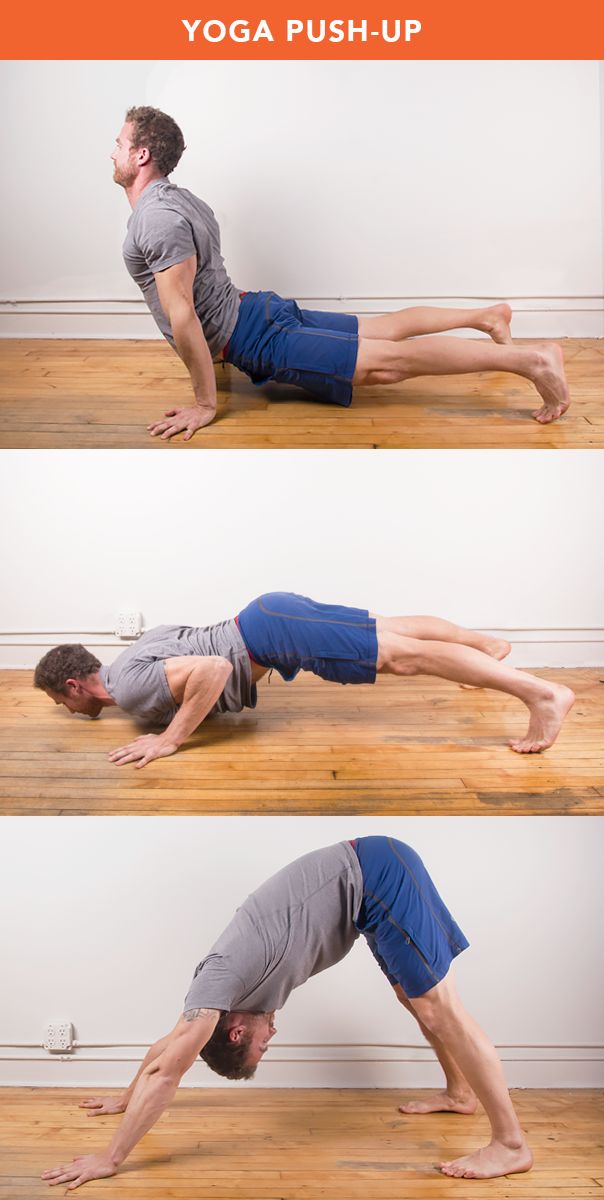 If you don’t have enough willpower, it’s better to master this physical exercise not at home, but in the gym, where the whole environment around will motivate. “There are more chances to learn in the gym,” the coach is sure.
If you don’t have enough willpower, it’s better to master this physical exercise not at home, but in the gym, where the whole environment around will motivate. “There are more chances to learn in the gym,” the coach is sure.
Age category of materials: 18+
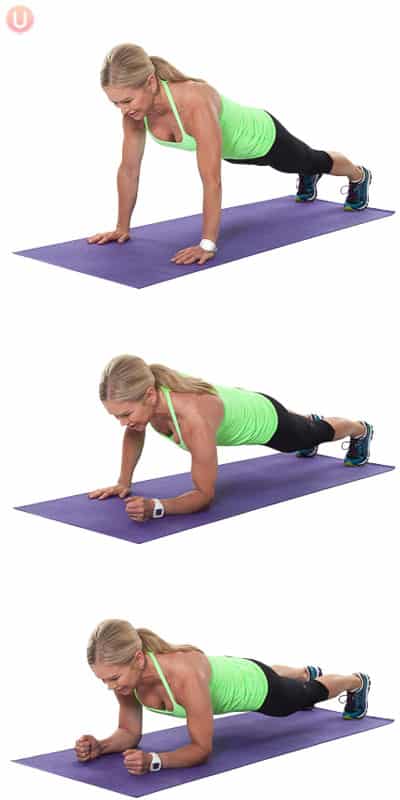 Choosing curtains for the kitchen: type and design "Amurskaya Pravda" continues the competition for the best folk advice from readers warm your stomach How to learn not to be late: 10 tips from a psychologist How to care for a beard: 7 tips for men
Choosing curtains for the kitchen: type and design "Amurskaya Pravda" continues the competition for the best folk advice from readers warm your stomach How to learn not to be late: 10 tips from a psychologist How to care for a beard: 7 tips for men April 25, 2020Sports and fitness
Lifehacker offers a detailed plan of five exercises.
Iya Zorina
Author of Lifehacker, athlete, CCM
Share
0 Of course, you can only do classic push-ups, but this is quite boring and can lead to overtraining of some muscles. A five-variation plan will diversify your workouts and help pump different muscle groups. So, let's begin.
So, let's begin.
